Bucklew, Phil Hinkle, born 18-12-1914 in Columbus, Ohio,  United States, to William D. Bucklew (1868–1937). Phil had two brothers, Infant Bucklew (1893–1895) and Charles C Bucklew (1893–1895). Phil was married with Helen, born Nagel Bucklew (1921-2004).
United States, to William D. Bucklew (1868–1937). Phil had two brothers, Infant Bucklew (1893–1895) and Charles C Bucklew (1893–1895). Phil was married with Helen, born Nagel Bucklew (1921-2004).
Phil attended Columbus North High School. 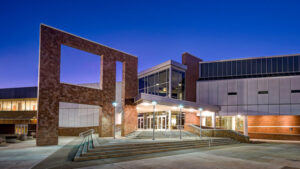
 He went on to attend Xavier University in Cincinnati, where he earned fame as a football player (fullback, punter, and tight end). After college, Bucklew played for the Cleveland Rams
He went on to attend Xavier University in Cincinnati, where he earned fame as a football player (fullback, punter, and tight end). After college, Bucklew played for the Cleveland Rams 
 in 1937 and 1938. In 1939, Bucklew left the Rams and coached the Columbus Bullies for two years, until the United States entered World War II in 1941.
in 1937 and 1938. In 1939, Bucklew left the Rams and coached the Columbus Bullies for two years, until the United States entered World War II in 1941.
Bucklew had served in the Naval Reserve from 1930 until 1934, and once again volunteered for military service on 08-12-1941, the day after the Japanese attack on Pearl Harbor.  He reported to Norfolk, Virginia, for his training and was commissioned as an ensign upon graduating. He soon joined the Navy Scouts and Raiders, an elite force of combat swimmers who scouted beaches for amphibious landings. As an Ensign, he served with the Scouts and Raiders
He reported to Norfolk, Virginia, for his training and was commissioned as an ensign upon graduating. He soon joined the Navy Scouts and Raiders, an elite force of combat swimmers who scouted beaches for amphibious landings. As an Ensign, he served with the Scouts and Raiders  in Operation Torch (the invasion of North Africa) in November 1942. In July 1943, he commanded a “Scout Boat” during the landings on Sicily (Operation Husky) and was awarded his first Navy Cross.
in Operation Torch (the invasion of North Africa) in November 1942. In July 1943, he commanded a “Scout Boat” during the landings on Sicily (Operation Husky) and was awarded his first Navy Cross. ![]() Bucklew participated in the landings at Salerno, Italy (Operation Avalanche), where he was awarded the Silver Star.
Bucklew participated in the landings at Salerno, Italy (Operation Avalanche), where he was awarded the Silver Star. ![]()
Bucklew and his unit were transferred to England to support the imminent invasion of Normandy. In January 1944, Bucklew and another S&R officer, Grant Gibbs Andreasen,  swam ashore at night to collect sand samples from the target beach, which would be later referred to as Omaha Beach. The mission planners needed to know whether the sand would support heavy vehicles. On another occasion, Bucklew and Andreasen were brought within 300 yards of the beach by a kayak paddled by a British Commando. They swam the rest of the way and hid in the water to watch and time sentry patrols, before going ashore to collect more sand samples and other useful intelligence. Grant Gibbs Andreasen died at Camarillo, Ventura County, California, on 06-05-1997.
swam ashore at night to collect sand samples from the target beach, which would be later referred to as Omaha Beach. The mission planners needed to know whether the sand would support heavy vehicles. On another occasion, Bucklew and Andreasen were brought within 300 yards of the beach by a kayak paddled by a British Commando. They swam the rest of the way and hid in the water to watch and time sentry patrols, before going ashore to collect more sand samples and other useful intelligence. Grant Gibbs Andreasen died at Camarillo, Ventura County, California, on 06-05-1997.
On D-Day, June 6, 1944, Bucklew commanded a scout boat, assigned to lead the first wave of tank-carrying landing craft to Omaha Beach. The landing craft were accompanied by DD tanks.  DD or duplex drive tanks, nicknamed “Donald Duck tanks”, were a type of amphibious swimming tank developed by the British during the Second World War. While he was still out at sea, Bucklew saw that the sea conditions were too dangerous for launching the DD tanks. Unfortunately, his radio report was ignored and most of the DD tanks foundered. Bucklew was awarded a second Navy Cross while leading the first wave of tank-carrying landing craft to the beach in his scout boat. On that occasion he had to combat both heavy surf and enemy fire. Phil remained on station as a guide boat all day, directing assault waves and giving supporting fire against German positions. He rescued many soldiers, whose landing craft were destroyed, from drowning. Bucklew laid down in the bow of his boat and pulled the drowning men from the water using the strength of his arms.
DD or duplex drive tanks, nicknamed “Donald Duck tanks”, were a type of amphibious swimming tank developed by the British during the Second World War. While he was still out at sea, Bucklew saw that the sea conditions were too dangerous for launching the DD tanks. Unfortunately, his radio report was ignored and most of the DD tanks foundered. Bucklew was awarded a second Navy Cross while leading the first wave of tank-carrying landing craft to the beach in his scout boat. On that occasion he had to combat both heavy surf and enemy fire. Phil remained on station as a guide boat all day, directing assault waves and giving supporting fire against German positions. He rescued many soldiers, whose landing craft were destroyed, from drowning. Bucklew laid down in the bow of his boat and pulled the drowning men from the water using the strength of his arms.
Bucklew’s final assignment during World War II took him to China, where he scouted the Chinese coast and later moved inland to help train and equip Chinese guerrillas to fight the Japanese. Bucklew moved from one partisan group to another, gathering intelligence on the Japanese along the way. Due to his large size and inability to speak Chinese, the partisans disguised him as a deaf mute. The Japanese learned of this “American Spy” and labeled him “Big Stoop”. When his mission was complete he was debriefed in Calcutta, India.
Three of his closest friends in the Scouts also had athletic backgrounds: John Robert Tripson,  formerly a Detroit Lions all-pro tackle, Robert Sherman “Bob” Halperin,
formerly a Detroit Lions all-pro tackle, Robert Sherman “Bob” Halperin, 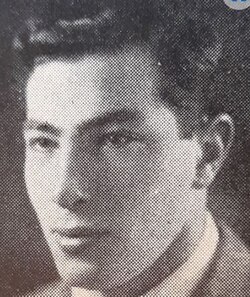 who had played quarterback for Knute Rockne’s Notre Dame football team and in the NFL, and John “Jerry, J.D.” Gerald Donnell,
who had played quarterback for Knute Rockne’s Notre Dame football team and in the NFL, and John “Jerry, J.D.” Gerald Donnell,  a football player who was killed in action at the Battle of Anzio.
a football player who was killed in action at the Battle of Anzio.
In 1946, Bucklew married his fiancée, Helen Nagel,  and left active duty for two years to complete his Ed.D. in education at Columbia University.
and left active duty for two years to complete his Ed.D. in education at Columbia University.
In 1962, after 20 years of service, Bucklew was facing mandatory retirement due to staff reductions within the Navy. However, with the creation of the SEAL Teams under President John Fitzgerald. Kennedy,  Bucklew was selected to command Naval Special Warfare Group One, which consisted of SEAL Team 1, Underwater Demolition Teams 11 and 12, and BSU-1 (Boat Support Unit). Bucklew never qualified at BUD/S himself.
Bucklew was selected to command Naval Special Warfare Group One, which consisted of SEAL Team 1, Underwater Demolition Teams 11 and 12, and BSU-1 (Boat Support Unit). Bucklew never qualified at BUD/S himself.
In early 1964, before American forces became actively engaged in South Vietnam, Captain Bucklew, at the behest of CINCPAC Admiral Harry Donald Felt, 
 took part in an exploratory mission to determine what could be done to counter waterborne infiltration of South Vietnam. Bucklew and his staff traveled the Mekong Delta, interviewing dozens of Vietnamese military personnel and their American advisors. At the Cambodian border, Bucklew witnessed the Vietcong openly moving supplies by sampan inside Cambodia, despite its neutrality. In his report to CINCPAC, Bucklew described the totality of the Communist infiltration effort, criticized the South Vietnamese response as inefficient and inadequate, and suggested that halting the Vietcong would require a coastal blockade augmented by extensive patrolling of the internal rivers along the Cambodian frontier, in addition to the Mekong and Bassac. The “Bucklew Report” further recommended that the Navy establish “a viable means of controlling the rivers by implementing barricades, curfews, checkpoints, and patrols.”
took part in an exploratory mission to determine what could be done to counter waterborne infiltration of South Vietnam. Bucklew and his staff traveled the Mekong Delta, interviewing dozens of Vietnamese military personnel and their American advisors. At the Cambodian border, Bucklew witnessed the Vietcong openly moving supplies by sampan inside Cambodia, despite its neutrality. In his report to CINCPAC, Bucklew described the totality of the Communist infiltration effort, criticized the South Vietnamese response as inefficient and inadequate, and suggested that halting the Vietcong would require a coastal blockade augmented by extensive patrolling of the internal rivers along the Cambodian frontier, in addition to the Mekong and Bassac. The “Bucklew Report” further recommended that the Navy establish “a viable means of controlling the rivers by implementing barricades, curfews, checkpoints, and patrols.”
After relinquishing command of NSWG1 in 1967, Bucklew was assigned to the Department of the Navy at the Pentagon, where he served until his retirement in 1969.
Death and buial ground of Bucklew, Phil Hinkle.




After retirement, Bucklew remained in the D.C. area. From 1974 to 1984, he served as the D.C. representative for Swiftships, a Louisiana boatbuilding company.
Bucklew is often called “The Father of Naval Special Warfare” by members of the Naval Special Warfare community and military authors. His written memoirs were published in 1982. In 1987, using a wheelchair after a stroke, Bucklew attended the ceremony in which the Naval Special Warfare Center in Coronado, California,  was named for him In October 1989, he was inducted as the 34th member of the Columbus Hall of Fame, and his photograph hangs in City Hall. Bucklew died 30-12-1992 (aged 78) at Fairfax Hospital in Fairfax, Virginia, in 1992 after suffering more strokes. Bucklew is buried at Arlington National Cemetery with his wife Helen Nagel (1921–2004).
was named for him In October 1989, he was inducted as the 34th member of the Columbus Hall of Fame, and his photograph hangs in City Hall. Bucklew died 30-12-1992 (aged 78) at Fairfax Hospital in Fairfax, Virginia, in 1992 after suffering more strokes. Bucklew is buried at Arlington National Cemetery with his wife Helen Nagel (1921–2004).
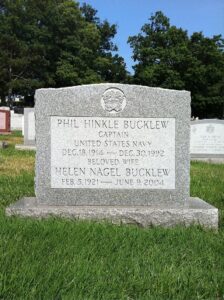
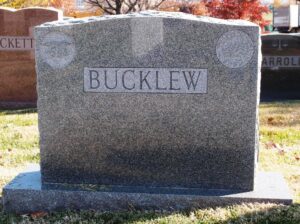
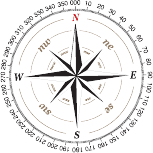


















Leave a Reply